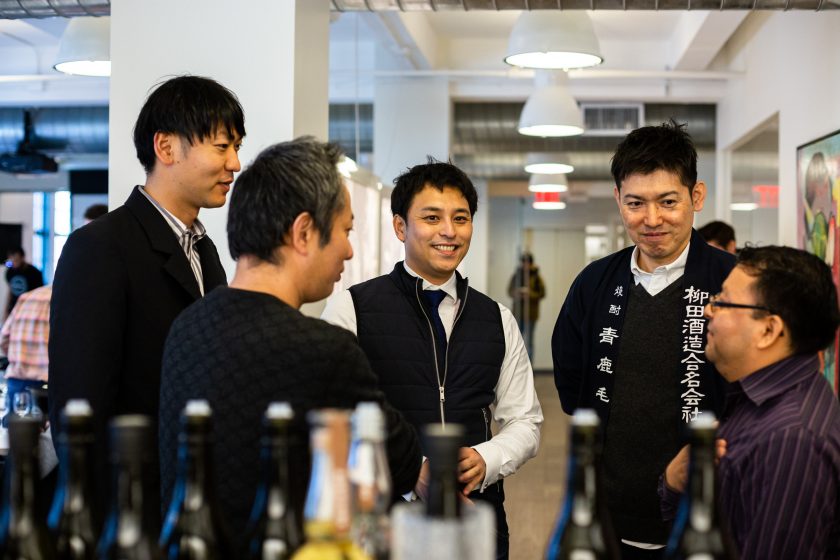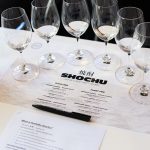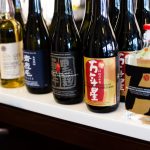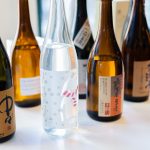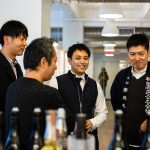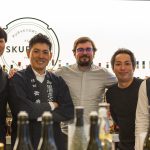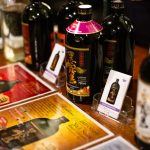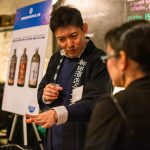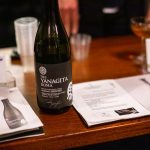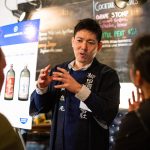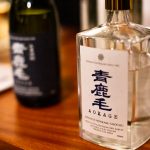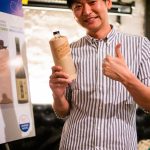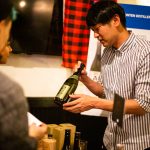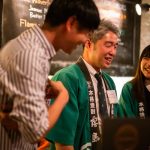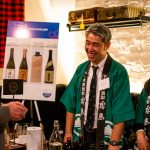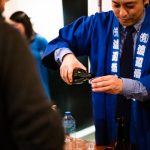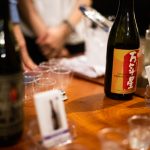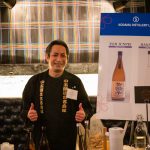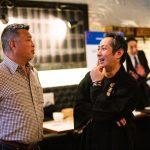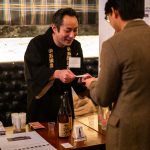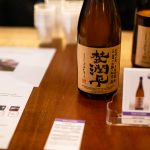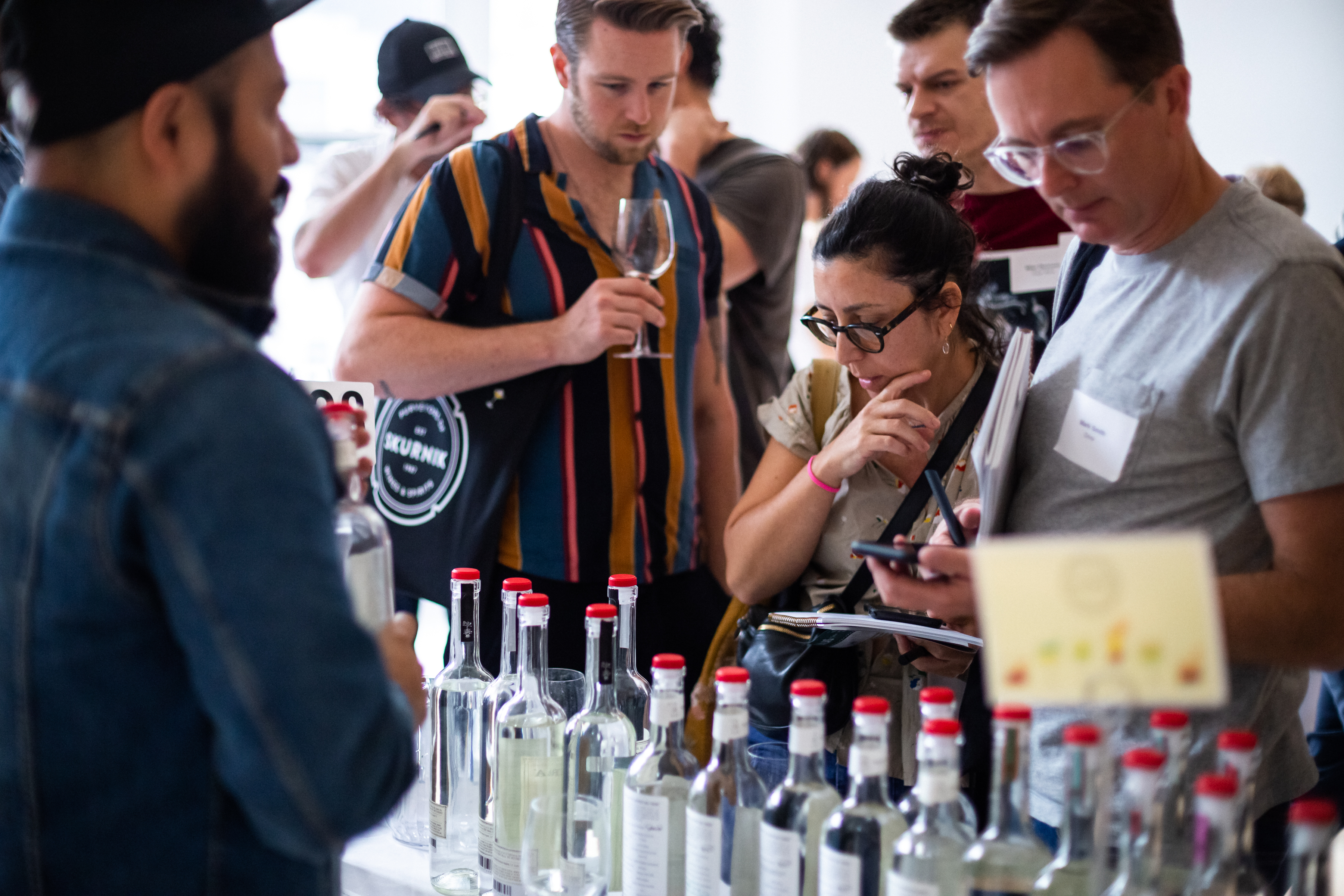While Japan has been getting a lot of attention recently for its excellent whisky, not many people outside of the country are familiar with its most popular spirit: shochu.
Shochu (pronounced show-chew) is Japan’s native spirit with hundreds of years of tradition. Rich in flavor and low in alcohol, it is one of the most varied spirits in the world. It’s made from all sorts of ingredients (with sweet potato and barley being the most common), and ranges in flavor from light and floral to deep and roasty.
Low enough in alcohol to drink with food, shochu is one of the biggest categories of artisanal world spirits still unknown in the US. There is about three times more shochu produced every year than tequila!
We were lucky enough to have four of the best young artisanal shochu makers in Japan join us this February for an in-depth seminar that dived into their process, the terroir of their ingredients, and the delicious applications of these spirits. They all hail from the southern prefecture of Miyazaki known for its rich agriculture and natural beauty, so much so that fully 12% of all the land in Miyazaki is dedicated to national parks. Each of these shochu makers approaches their craft with a different philosophy, showing us the incredible diversity of this flavorful spirit.
After a short intro to the category of shochu (check out this past blog post if you need a primer), we spoke to Shinsaku Kuroki, the fifth generation of his family to run the Kuroki Honten Distillery. Kuroki Honten has the longest history of any of our producers, dating to 1885. While the company is mostly known for making some of the most prominent craft shochu in the country like the iconic ‘NakaNaka’ and ‘Hyakunen no Kodoku’ brands, their efforts in sustainable agriculture are less well known.
Kuroki-san laid out how they grow most of the ingredients for their shochu on 43 hectares of their own land, mostly out of a desire to see the farmland in their hometown used in a sustainable manner. They are working on achieving a zero-waste junkan style system. The byproducts of distillation are turned into fertilizer and returned to the soil, growing not just more barley and potatoes for shochu, but also organic greens and vegetables for locals.
Next, we spoke to Junpei Kanemaru of the Kodama Distillery. While Junpei-san comes from a family of distillers they sold their shochu business when he was young. He is the only one of our shochu makers who actively decided to go into the business himself, taking over as master distiller for the traditional Kodama Distillery and developing his ‘Toji Junpei’ brand of sweet potato shochu. We learned that Junpei likes to work with unusual types of sweet potato commonly used for eating like beni-imo and murasaki-imo, red and purple sweet potatoes respectively, with massive differences in flavor.
We tasted his “Toji Junpei Beni-Imo” first, given how pretty and delicate of a spirit it is, with tropical aromas. A major eye-opener was his “Hanadori” shochu, a rare type made from just 1% of the whole distillation run and containing all the wild aromas of the heads of the spirit. While excellent chilled on its own, Junpei said his wife particularly likes the bright flavors poured over vanilla ice cream!
While Junpei specializes in the subtle differences of sweet potato, Tadashi Yanagita works almost exclusively with barley. The small and family-owned Yanagita Distillery is located next to the largest maker of sweet potato shochu in the world, so he concentrates on the intricacies and possibilities of barley. He brings his background and ten years of experience working as an engineer to the process, customizing everything in his distillery including his hybrid still, which is able to produce both the light and pretty ‘Koma’ barley shochu and the deep and roasty ‘Aokage’ simply by adjusting how heat and pressure are applied.
Lastly, we spoke to Koichiro Watanabe who couldn’t be more different from the controlled precision of Yanagita-san. Watanabe Distillery is also family-owned and operated, and when asked how many people worked there he paused and said “Myself… my young brother… my father… and my mother,” and shrugged. The Watanabe’s are working farmers and put a tremendous amount of effort into growing all the sweet potatoes that go into their ‘Asahi Mannen’ sweet potato shochu.
After harvest they believe in as little intervention as possible, leaving the sweet potatoes whole and still flecked with soil. They are fermented in an open air tank that picks up the yeast and microbes of the surrounding environment, and left to bubble away without any adjustments to temperature. All that work became apparent once we tasted the shochu in our glasses with its rich and layered flavors.
We’re only just starting to encounter the full potential of this incredible spirit here in the US, and are lucky enough to get occasional visits and in-depth insights from some of the best makers in the world!




